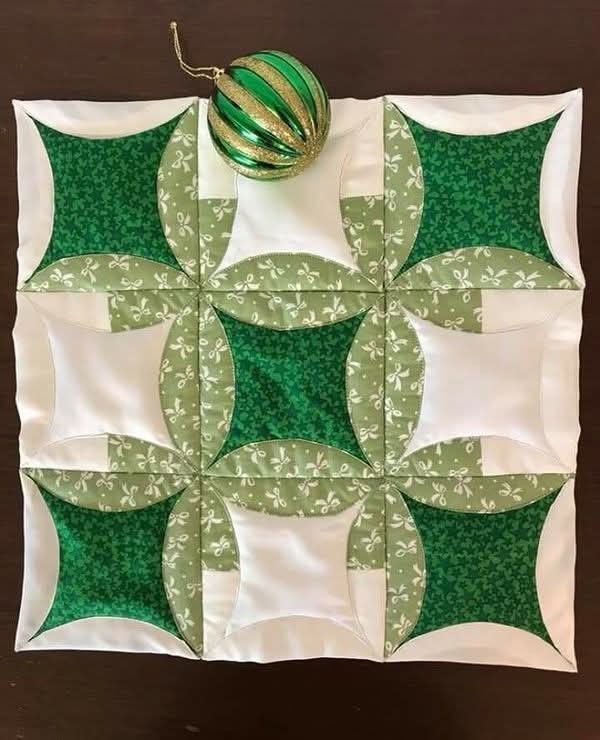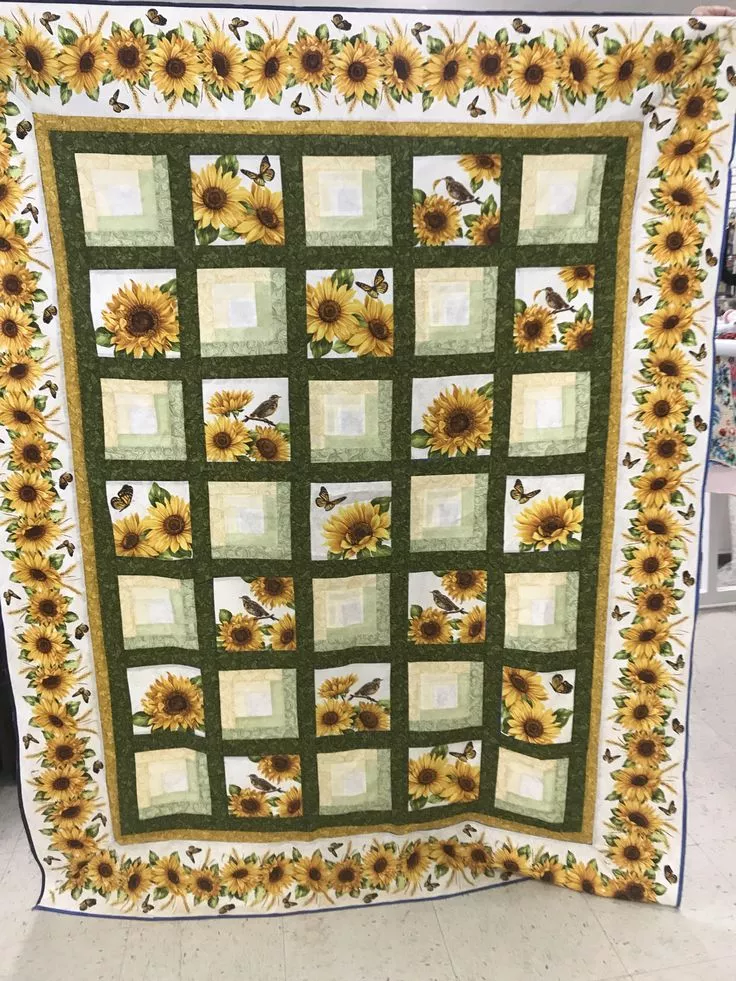

The Log Cabin Quilt Pattern is one of the most iconic and timeless designs in the world of quilting. Known for its bold geometric style and rich historical roots, this pattern continues to captivate crafters of all experience levels. Whether you’re new to quilting or a seasoned artisan, the log cabin design offers versatility, creativity, and a meaningful connection to traditional craftsmanship.
The first appearance of the Log Cabin Quilt Pattern in American history dates back to the 1800s, symbolizing warmth, family, and the home. Each block in this quilt typically features a small center square, often in red or yellow to represent the hearth, with “logs” (strips of fabric) radiating outward. The result is a stunning, layered design that can be manipulated into a variety of final layouts.
Much like crochet trends such as the Adorable Crochet Kitten Keychains – Free Tutorial, the log cabin quilt block has made a huge resurgence online due to its adaptability. It’s an ideal canvas for exploring color play, fabric coordination, and personalized design—all while mastering essential quilting techniques.

Image From Pinterest
Before starting your Log Cabin Quilt Pattern, it’s important to gather the necessary materials and tools. A well-prepared workstation ensures smoother progress and a more enjoyable quilting experience.
To begin, you’ll need a selection of high-quality quilting cotton fabrics. Choose a combination of light, medium, and dark tones. This contrast is essential for making the log cabin’s layers pop and for achieving the visual depth the pattern is known for.
A rotary cutter, self-healing cutting mat, and clear quilting ruler will help you achieve the precise cuts needed for the strips (logs) that make up each block. These tools are especially important for beginners learning accurate piecing.
Your sewing machine should be fitted with a ¼-inch presser foot to maintain consistent seam allowances. Thread choice is flexible, but most quilters prefer a neutral color like beige or gray that blends well with a range of fabrics.
Other helpful tools include quilting pins or clips, a seam ripper (because mistakes happen!), and an iron with a pressing surface. Pressing your seams as you go keeps your blocks flat and professional-looking.
Lastly, having a notebook or digital template to sketch out your Log Cabin Quilt Pattern layout is a great idea. There are many variations of the log cabin block (like barn raising, courthouse steps, or straight furrow), so planning in advance helps you visualize the final quilt.
Now that you’re ready, let’s break down the process of sewing a classic Log Cabin Quilt Pattern block. This block is perfect for chain-piecing and batch sewing, making it efficient and beginner-friendly.
Start with your center square—traditionally red, symbolizing the heart of the home. A good starting size is 2.5” x 2.5”, but this can vary depending on how large you want the final quilt to be.
Next, add the first strip (log) to one side of the center square. Sew it right sides together, then press it open. Add the second strip to the next side in a clockwise or counterclockwise motion, continuing the process in a spiral pattern.
Continue adding logs in alternating colors—light on one side, dark on the other. This contrast is what gives the Log Cabin Quilt Pattern its signature shading effect and strong visual lines.
After each log is added, press the seams outward and trim the block to maintain crisp, square edges. Take your time with alignment to ensure symmetry as the block grows.
Once all logs are attached, your block should look like a layered square with a strong central focus. Repeat this process to create multiple blocks. Each one will contribute to the overall design of the quilt, whether you’re going for a traditional or modern arrangement.
Finally, arrange your blocks into a layout you love. Try different orientations—like zigzag, diamond, or staircase effects—to see what works best with your color scheme and aesthetic.
One of the best things about the Log Cabin Quilt Pattern is how customizable it is. Each block can be arranged in numerous ways to create a variety of patterns, making every finished quilt truly unique.
The Barn Raising layout features concentric diamonds, creating a dramatic and eye-catching centerpiece. This design is perfect for bed quilts or large wall hangings that need a strong focal point.
The Straight Furrow layout, on the other hand, offers diagonal lines that flow across the quilt. This classic variation is excellent for modern interiors and provides a sense of movement and flow.
Another option is the Courthouse Steps style, where logs are added to opposite sides rather than spiraling around. It offers a more symmetrical look and is ideal for a neat, orderly aesthetic.
Beyond quilts, the Log Cabin Quilt Pattern can be used to make beautiful accessories. Think tote bags, pillow covers, table runners, and even journal covers. Just like with projects using the Adorable Crochet Kitten Keychains – Free Tutorial, the creative possibilities are endless when working on a smaller scale.
Use scraps from past projects to create scrappy log cabin blocks. These eco-friendly, memory-filled creations are meaningful and sustainable.
Finally, consider mixing your log cabin blocks with other traditional patterns to create a sampler quilt. This can add visual interest and showcase your range of quilting skills.
If you’re looking to blog about or sell your finished Log Cabin Quilt Pattern projects, following proper SEO practices is essential for success in today’s digital world.
First, always include your main keyword—Log Cabin Quilt Pattern—in the title, URL, and first paragraph of your post or product description. Repeating it naturally throughout your content reinforces relevance for search engines.
Use long-tail keywords such as how to make a log cabin quilt, modern log cabin quilt ideas, and easy log cabin quilt block tutorial to attract targeted traffic from quilters who are actively searching for guidance.
Images play a big role. Include clear, high-resolution photos of your quilt blocks and finished project. Optimize these images by renaming the files and using descriptive alt text like “log-cabin-quilt-pattern-block-layout.jpg”.
Write a compelling meta description that encourages clicks. For example: “Discover step-by-step instructions and layout ideas for the timeless Log Cabin Quilt Pattern, perfect for beginners and pros.”
Consider offering a free downloadable template or printable cutting guide. Like the buzz created by the Adorable Crochet Kitten Keychains – Free Tutorial, giving something valuable for free encourages visitors to return and share your work.
Encourage engagement by asking readers to share their quilts or tips in the comments. This increases dwell time and community interaction, which both help SEO.
Q1: Is the Log Cabin Quilt Pattern beginner-friendly?
Yes! It’s an ideal first project because it teaches fabric cutting, consistent seam allowances, and pressing—all key quilting skills.
Q2: How many fabrics do I need for a log cabin quilt?
Typically, 3–6 fabrics are used for light, dark, and medium tones, plus one for the center square. You can use more for a scrappier look.
Q3: What size is a standard log cabin block?
Most blocks range from 8″ to 12″, but the size can vary based on how many “logs” you add.
Q4: How do I keep my blocks square and even?
Press each seam carefully and trim after each log is added. Using a ruler helps maintain symmetry.
Q5: Can I machine quilt a log cabin quilt?
Absolutely! Straight-line or echo quilting works beautifully to enhance the structure of the log cabin design.
Q6: What’s the best layout for small quilts or baby quilts?
The barn raising and courthouse steps layouts are especially striking in smaller projects like baby quilts or lap throws.
The Log Cabin Quilt Pattern is a cherished design that bridges the past and present of quilting. Its simplicity, combined with limitless customization options, makes it a must-try for crafters at any level. From traditional layouts to modern interpretations, every log cabin quilt tells a story.
Whether you’re quilting as a hobby or building a handmade business, mastering this pattern opens the door to creativity and craftsmanship. And, just like with trending projects such as the Adorable Crochet Kitten Keychains – Free Tutorial, you can share your work with pride and inspire others.
We hope this guide helped you feel confident and excited to start your own Log Cabin Quilt Pattern. Please leave a sincere opinion and suggestions in the comments—your feedback helps make the quilting community even stronger!